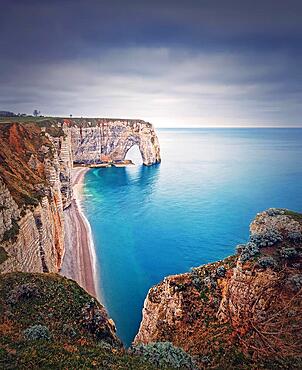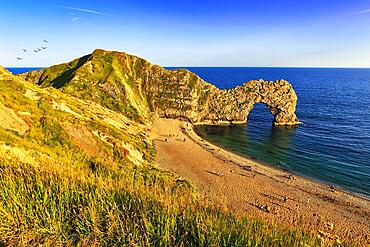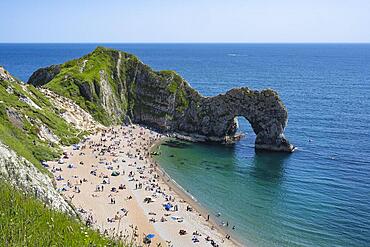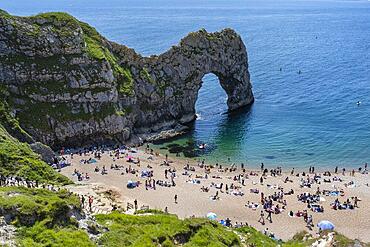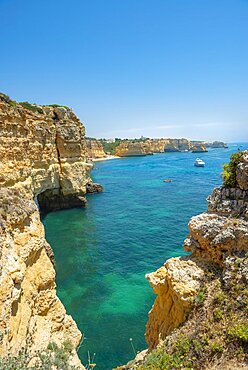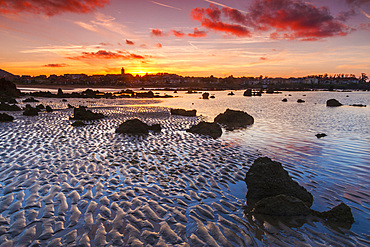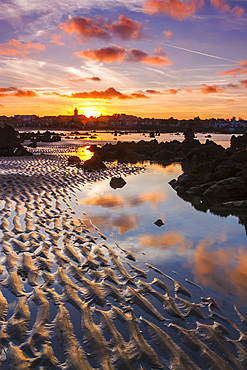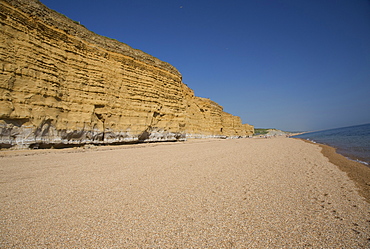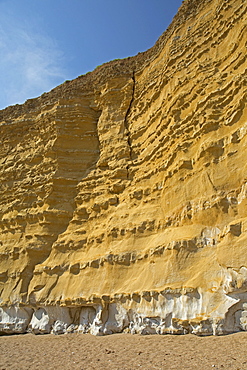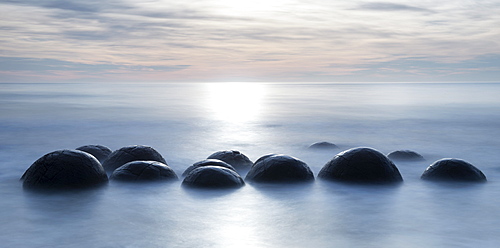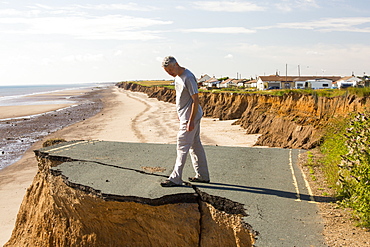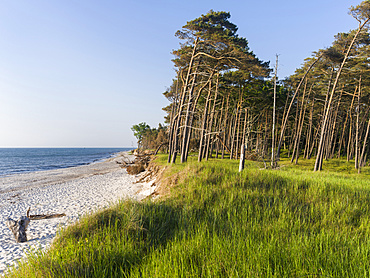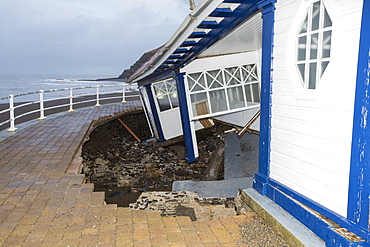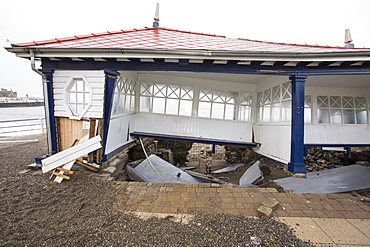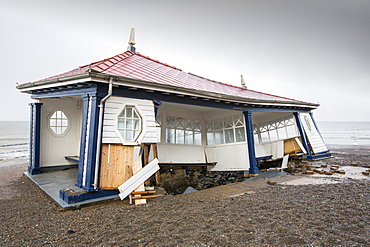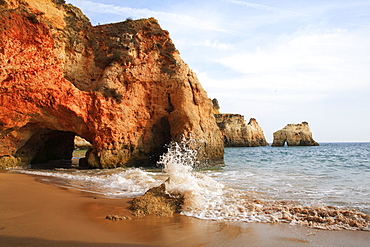Recent searches
Loading...
832-404403 - Father playing in the sand with son, Praia do Barranco das Belharucas beach, Albufeira, Algarve. Portugal
1116-52834 - Stunning view of the sandy beach with surf forming a zigzag pattern in the foam next to the large, boulders lining the shores at The Baths, a famous beach in the BVI's, Virgin Gorda, British Virgin Islands, Caribbean
1116-52832 - Woman standing under the large, boulders on the seaside shores of The Baths, a famous beach in the BVI's, Virgin Gorda, British Virgin Islands, Caribbean
832-402979 - Idyllic view to Porte d'Aval natural arch at Etretat famous cliffs washed by Atlantic ocean, Normandy, France. Sightseeing coastline scenery, beautiful natural bay with sand beach
832-402227 - Coastline with bathing beach at Durdle Door, limestone rock bridge, UNESCO World Heritage Site, Dorset landmark, England, United Kingdom, Europe
832-401713 - Bathing beach at the famous rock bridge Durdledoor, West Lulworth, Dorset, England Great Britain
832-401710 - Bathing beach at the famous rock bridge Durdledoor, West Lulworth, Dorset, England Great Britain
832-401711 - Bathing beach at the famous rock bridge Durdledoor, West Lulworth, Dorset, England Great Britain
1350-6485 - Panorama of La Graciosa Island with Caleta del Sebo town, from Mirador del Rio. Lanzarote, Canary Islands, Spain
832-397748 - Turquoise sea, steep coast, Praia da Marinha beach, rugged rocky coast of sandstone, rock formations in the sea, Algarve, Lagos, Portugal, Europe
832-397749 - Turquoise sea, steep coast, Praia da Marinha beach, rugged rocky coast of sandstone, rock formations in the sea, Algarve, Lagos, Portugal, Europe
832-397148 - Aerial view of ocean waves and fantastic rocky shoreline, Aerial view of a coastline along Great Ocean Road, Aerial view of waves hitting rocks on beach with turquoise water
1350-5474 - Rocky beach and village at dusk. Trengandin beach. Noja, Cantabria. Spain, Europe.
1350-5475 - Rocky beach and village at dusk. Trengandin beach. Noja, Cantabria. Spain, Europe.
1350-5532 - Galizano bech aerial view. Ribamontan al Mar. Cantabria, Spain, Europe.
1350-5473 - Rocky beach and village at dusk. Trengandin beach. Noja, Cantabria. Spain, Europe.
1174-10981 - Sandbags in rows at the water's edge to prevent erosion of the beach
1174-10980 - Sandbags in rows at the water's edge to prevent erosion of the beach
1174-10982 - Sandbags in rows at the water's edge to prevent erosion of the beach
1116-50925 - The Twelve Apostles, limestone rock formations along the coast, Great Ocean Road, Port Campbell National Park; Port Campbell, Victoria, Australia
860-289024 - Calais beach and its pier in winter, Pas-de-Calais, Hauts de France, France
1116-49127 - Durdle Door, a natural arch along the coast, Dorset, England
799-3940 - Holywell Cave (St. Cuthbert's Cave) on Holywell Beach, Cornwall, England, United Kingdom, Europe
860-288361 - Red sand beach, Ile de Groix, Morbihan, Brittany, France
860-287767 - Iconic golden cliffs West Bay and Hive Beach Burton Bradstock Jurassic Coast Dorset UK
860-287769 - Iconic golden cliffs West Bay and Hive Beach Burton Bradstock Jurassic Coast, Dorset, UK
1116-45416 - Sea Stacks Along The Coast Of Iceland's Westfjords As Sunset Begins, West Fjords, Iceland
1116-45973 - Bowleaze Cove, Weymouth, Dorset, England
1116-45420 - The Sea Stacks Known As Thrjatiudalastapi, West Fjords, Iceland
1306-312 - The Moeraki Boulders at sunrise, Moeraki Beach, Otago, South Island, New Zealand, Pacific
1306-296 - Moeraki boulders with a long exposure at Moeraki Beach, Otago, South Island, New Zealand, Pacific
1306-308 - Spectacular sunrise at The Moeraki Boulders, Moeraki Beach, Otago, South Island, New Zealand, Pacific
1209-203 - Am Buachaille sea stack at sunset, Sandwood Bay, Sutherland, Scotland, United Kingdom, Europe
1209-202 - Rock formations at Sandwood Bay, with Am Buachaille sea stack in far distance, Sutherland, Scotland, United Kingdom, Europe
1209-201 - Rock formations at Sandwood Bay, with Am Buachaille sea stack in far distance, Sutherland, Scotland, United Kingdom, Europe
1209-206 - Rock formations at Sandwood Bay, with Am Buachaille sea stack in far distance, Sutherland, Scotland, United Kingdom, Europe
1209-214 - Sandwood Bay, with Am Buachaille sea stack in far distance, Sutherland, Scotland, United Kingdom, Europe
1116-43109 - Surf Breaks Near A Natural Arch, Cannon Beach, Oregon, United States Of America
1116-42518 - Haystack Rock At Cannon Beach, A Famous Landmark, Cannon Beach, Oregon, United States Of America
1116-42520 - A Large Natural Arch Found At Ecola State Park, Cannon Beach, Oregon, United States Of America
1297-526 - Karst scenery at Ao Nang beach in Krabi, Thailand, Southeast Asia, Asia
1298-89 - The exposed eroded cliffs of the Glamorgan Heritage Coast, Monknash, South Wales, United Kingdom, Europe
1298-29 - The exposed eroded cliffs and varied geology of the Glamorgan Heritage Coast, Monknash, South Wales, United Kingdom, Europe
832-380916 - Steep cliff with arch of rock and small sandy beach, Cape Farewell, Tasman Sea, Puponga, North Island, New Zealand, Oceania
832-380859 - Moeraki boulders, at sunrise, geological formation, Koekohe Beach, Moeraki, East Coast, Otago, South Island, New Zealand, Oceania
832-380886 - Beach at Cathedral Cove, Mercury Bay, Coromandel Peninsula, North Island, New Zealand, Oceania
857-95431 - A collapsed coastal road at between Skipsea and Ulrome on Yorkshires East Coast, near Skipsea, UK. The coast is composed of soft boulder clays, very vulnerable to coastal erosion. This section of coast has been eroding since Roman times, with many villages having disappeared into the sea, and is the fastest eroding coast in Europe. Climate change is speeding up the erosion, with sea level rise, increased stormy weather and increased heavy rainfall events, all playing their part.
857-95432 - A collapsed coastal road at between Skipsea and Ulrome on Yorkshires East Coast, near Skipsea, UK. The coast is composed of soft boulder clays, very vulnerable to coastal erosion. This section of coast has been eroding since Roman times, with many villages having disappeared into the sea, and is the fastest eroding coast in Europe. Climate change is speeding up the erosion, with sea level rise, increased stormy weather and increased heavy rainfall events, all playing their part.
857-95435 - A collapsed coastal road at near Aldbrough on Yorkshires East Coast, near Skipsea, UK. The coast is composed of soft boulder clays, very vulnerable to coastal erosion. This section of coast has been eroding since Roman times, with many villages having disappeared into the sea, and is the fastest eroding coast in Europe. Climate change is speeding up the erosion, with sea level rise, increased stormy weather and increased heavy rainfall events, all playing their part.
857-95433 - A collapsed coastal road at between Skipsea and Ulrome on Yorkshires East Coast, near Skipsea, UK. The coast is composed of soft boulder clays, very vulnerable to coastal erosion. This section of coast has been eroding since Roman times, with many villages having disappeared into the sea, and is the fastest eroding coast in Europe. Climate change is speeding up the erosion, with sea level rise, increased stormy weather and increased heavy rainfall events, all playing their part.
857-95437 - A collapsed coastal road at between Skipsea and Ulrome on Yorkshires East Coast, near Skipsea, UK. The coast is composed of soft boulder clays, very vulnerable to coastal erosion. This section of coast has been eroding since Roman times, with many villages having disappeared into the sea, and is the fastest eroding coast in Europe. Climate change is speeding up the erosion, with sea level rise, increased stormy weather and increased heavy rainfall events, all playing their part.
857-95436 - A collapsed coastal road at between Skipsea and Ulrome on Yorkshires East Coast, near Skipsea, UK. The coast is composed of soft boulder clays, very vulnerable to coastal erosion. This section of coast has been eroding since Roman times, with many villages having disappeared into the sea, and is the fastest eroding coast in Europe. Climate change is speeding up the erosion, with sea level rise, increased stormy weather and increased heavy rainfall events, all playing their part.
857-95434 - A collapsed coastal road at Barmston on Yorkshires East Coast, near Skipsea, UK. The coast is composed of soft boulder clays, very vulnerable to coastal erosion. This section of coast has been eroding since Roman times, with many villages having disappeared into the sea, and is the fastest eroding coast in Europe. Climate change is speeding up the erosion, with sea level rise, increased stormy weather and increased heavy rainfall events, all playing their part.
857-95438 - Smashed concrete sea defenses at Ulrome near Skipsea on Yorkshires East Coast, UK. The sea has eroded past the barriers and left them stranded further down the beach. The coast is composed of soft boulder clays, very vulnerable to coastal erosion. This section of coast has been eroding since Roman times, with many villages having disappeared into the sea, and is the fastest eroding coast in Europe. Climate change is speeding up the erosion, with sea level rise, increased stormy weather and increased heavy rainfall events, all playing their part.
797-12992 - England, Dorset, Durdle Door, Close up of limestone arch on the Jurassic Coast.
797-12991 - England, Dorset, Limestone cliffs adjacent to Durdle Door.
746-88173 - Coastal forest at the Weststrand (western beach) on the Darss Peninsula. Western Pomerania Lagoon Area NP. Europe, Germany, West-Pomerania, June
746-88172 - The Weststrand (western beach) on the Darss Peninsula. The beach and the coastal forest is eroded by storms. Western Pomerania Lagoon Area NP. Europe, Germany, West-Pomerania, June
1179-973 - The sea caves of Benagil with natural windows on the clear waters of the Atlantic Ocean, Faro District, Algarve, Portugal, Europe
1179-974 - A tourist inside the sea caves of Benagil admires the clear waters of the Atlantic Ocean, Faro District, Algarve, Portugal, Europe
911-10890 - A road eroded and dropping off into the North sea at Happisburgh, Norfolk, a rapidly eroding section of coastline, UK.
911-10891 - A road eroded and dropping off into the North sea at Happisburgh, Norfolk, a rapidly eroding section of coastline, UK.
911-10750 - The Remains of the Godwin battery on the beach at Kilnsea at the head of Spurn point on Yorkshires East Coast, UK. Initially constructed during the First World War, the Godwin Battery was added to during the Second World War. It comprised of gun emplacements, search light, barracks, officers’ mess, and a hospital. This section of coastline is the fastest eroding coastline in Europe. The soft boulder clay cliffs are easily eroded and have been eroding since Roman Times, but recently the climate change impacts of increased stormy weather, increased heavy rainfall events and sea level rise have accelerated the rate of erosion. The average rate of attrition is 1.5metres per year, last year it was 5 metres.
911-10758 - After a week of high tides, storm surges and storm force winds, the sea front promenade of Aberystwyth in Wales has been devastated, with millions of £'s of damage. The crsahing waves punched a large hole in the sea wall and has collapsed Aberystwyth's iconic, Victorian promenade shelter, which has stood for over 100 years. This picture was taken on Wednesday 8th January, 2014, the day the council started to try and clear the thousands of tonnes of beach rubble off the sea front road.
911-10756 - After a week of high tides, storm surges and storm force winds, the sea front promenade of Aberystwyth in Wales has been devastated, with millions of £'s of damage. The crsahing waves punched a large hole in the sea wall and has collapsed Aberystwyth's iconic, Victorian promenade shelter, which has stood for over 100 years. This picture was taken on Wednesday 8th January, 2014, the day the council started to try and clear the thousands of tonnes of beach rubble off the sea front road.
911-10749 - The Remains of the Godwin battery on the beach at Kilnsea at the head of Spurn point on Yorkshires East Coast, UK. Initially constructed during the First World War, the Godwin Battery was added to during the Second World War. It comprised of gun emplacements, search light, barracks, officers’ mess, and a hospital. This section of coastline is the fastest eroding coastline in Europe. The soft boulder clay cliffs are easily eroded and have been eroding since Roman Times, but recently the climate change impacts of increased stormy weather, increased heavy rainfall events and sea level rise have accelerated the rate of erosion. The average rate of attrition is 1.5metres per year, last year it was 5 metres.
911-10775 - A road closed on Walney Island, Cumbria, UK, following coastal erosion during severe winter storms.
911-10757 - After a week of high tides, storm surges and storm force winds, the sea front promenade of Aberystwyth in Wales has been devastated, with millions of £'s of damage. The crsahing waves punched a large hole in the sea wall and has collapsed Aberystwyth's iconic, Victorian promenade shelter, which has stood for over 100 years. This picture was taken on Wednesday 8th January, 2014, the day the council started to try and clear the thousands of tonnes of beach rubble off the sea front road.
911-10561 - The famous split rock of Clachtoll in Clachtoll, Assynt, Noth West Highlands, Scotland, UK.
911-10166 - Dunes collapsing at the head of the beach on the Northumberland coast after being undercut by a storm and high tide.
911-10173 - A holiday chalet in the sand dunes at low Newton by the Sea on Northumberland's coast stands precarioulsy close to the edge following a severe storm surge in December 2013 that caused considerable erosion to the sand dunes.
911-10195 - Volcanic rocks on Deception Island in the South Shetland Islands off the Antarctic Peninsular which is an active volcanic caldera.
911-10073 - A collapsed coastal road at Barmston on Yorkshires East Coast, near Skipsea, UK. The coast is composed of soft boulder clays, very vulnerable to coastal erosion. This sectiion of coast has been eroding since Roman times, with many villages having disappeared into the sea, and is the fastest eroding coast in Europe. Climate change is speeding up the erosion, with sea level rise, increased stormy weather and increased heavy rainfall events, all palying their part.
911-10074 - A Second world War lookout post leaning alarmingly and about to tumble over the edge of the cliff near Aldbrough on Yorkshires East Coast, UK. The coast is composed of soft boulder clays, very vulnerable to coastal erosion. This section of coast has been eroding since Roman times, with many villages having disappeared into the sea, and is the fastest eroding coast in Europe. Climate change is speeding up the erosion, with sea level rise, increased stormy weather and increased heavy rainfall events, all playing their part.
911-10071 - A collapsed coastal road at between Skipsea and Ulrome on Yorkshires East Coast, near Skipsea, UK. The coast is composed of soft boulder clays, very vulnerable to coastal erosion. This sectiion of coast has been eroding since Roman times, with many villages having disappeared into the sea, and is the fastest eroding coast in Europe. Climate change is speeding up the erosion, with sea level rise, increased stormy weather and increased heavy rainfall events, all palying their part.
911-10069 - Concrete sea defences at Beach Bank Caravan Park in Ulrome near Skipsea on Yorkshires East Coast, UK. The coast is composed of soft boulder clays, very vulnerable to coastal erosion. This section of coast has been eroding since Roman times, with many villages having disappeared into the sea, and is the fastest eroding coast in Europe. Climate change is speeding up the erosion, with sea level rise, increased stormy weather and increased heavy rainfall events, all playing their part.
911-10101 - Cornish coastal scenery at Porthmeor Cove near Zennor, UK, with Purple loosestrife (Lythrum salicaria) flowering in the foreground.
911-10070 - A collapsed coastal road at near Aldbrough on Yorkshires East Coast, near Skipsea, UK. The coast is composed of soft boulder clays, very vulnerable to coastal erosion. This sectiion of coast has been eroding since Roman times, with many villages having disappeared into the sea, and is the fastest eroding coast in Europe. Climate change is speeding up the erosion, with sea level rise, increased stormy weather and increased heavy rainfall events, all palying their part.
911-10066 - A collapsed coastal road at Easingotn on Yorkshires East Coast, near Skipsea, UK. The coast is composed of soft boulder clays, very vulnerable to coastal erosion. This sectiion of coast has been eroding since Roman times, with many villages having disappeared into the sea, and is the fastest eroding coast in Europe. Climate change is speeding up the erosion, with sea level rise, increased stormy weather and increased heavy rainfall events, all palying their part.
911-10100 - Cornish coastal scenery at Porthmeor Cove near Zennor, UK.
911-10068 - A collapsed coastal road at between Skipsea and Ulrome on Yorkshires East Coast, near Skipsea, UK. The coast is composed of soft boulder clays, very vulnerable to coastal erosion. This sectiion of coast has been eroding since Roman times, with many villages having disappeared into the sea, and is the fastest eroding coast in Europe. Climate change is speeding up the erosion, with sea level rise, increased stormy weather and increased heavy rainfall events, all palying their part.
911-10072 - A collapsed coastal road at between Skipsea and Ulrome on Yorkshires East Coast, near Skipsea, UK. The coast is composed of soft boulder clays, very vulnerable to coastal erosion. This sectiion of coast has been eroding since Roman times, with many villages having disappeared into the sea, and is the fastest eroding coast in Europe. Climate change is speeding up the erosion, with sea level rise, increased stormy weather and increased heavy rainfall events, all palying their part.
911-10067 - A collapsed coastal road near Skipsea on Yorkshires East Coast, UK. The coast is composed of soft boulder clays, very vulnerable to coastal erosion. This sectiion of coast has been eroding since Roman times, with many villages having disappeared into the sea, and is the fastest eroding coast in Europe. Climate change is speeding up the erosion, with sea level rise, increased stormy weather and increased heavy rainfall events, all playing their part.
799-2771 - Wooden sea defences at Porlock Bay in Exmoor National Park, Somerset, England, United Kingdom, Europe
816-7664 - Huge arch in the Natural Bridges State Park, Newfoundland, Canada, North America
816-7663 - Huge arch in the Natural Bridges State Park, Newfoundland, Canada, North America
832-348280 - Praia dos tres Irmaos near Alvor, Algarve, Portugal
832-348277 - Praia dos tres Irmaos near Alvor, Algarve, Portugal



